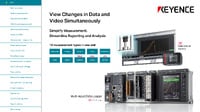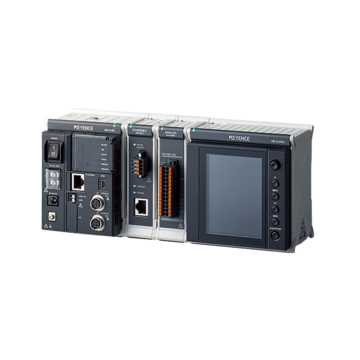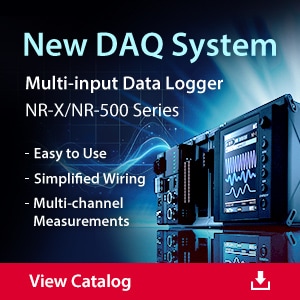Data Acquisition (DAQ)
Data Loggers vs Chart Recorders: What’s the Difference?
-
Tags:
- Data Acquisition
Modern manufacturing processes rely heavily on various data recording methods such as data loggers or chart recorders to capture, store, and analyze data to identify errors and points of interest. By monitoring various data points, companies can optimize their manufacturing processes, production, and logistics and maintain or even improve the overall quality of their products and services.
Data recording is usually done automatically via data recording devices, which are available in two categories: data loggers and chart recorders, the latter of which have been available on the market for over a century now.
In this article, we’ll discuss different temperature recording methods, primarily the differences between data loggers vs. chart recorders, how they work, the importance of choosing the appropriate device for the right application, and the reasons for switching from chart recorders to modern data loggers across multiple applications.
Understanding Data Recording Methods
Most data recording methods involve measuring an analog property of an object or environment, such as dimensional measurements, temperature, pressure, humidity, and light intensity (these are inherently analog), using analog or digital data recording devices.
Automated analog data recording usually involves recording data in a physical form, typically as traces on a paper chart. The movement of the pen across the paper directly corresponds to the changes in the variable property being measured, e.g., temperature, pressure, humidity, etc. This results in a continuous representation of data over time.
Automatic digital data recording involves recording the same or similar data in digital format. The analog property is measured via a measuring sensor, and the measurement is converted into a digital form for storage in digital memory. Unlike analog data recording, digital data recording methods allow for easier storage, transfer, and analysis of large amounts of data as these can be processed by computers and represented as charts, graphs, or reports.
How Does a Chart Recorder Work?
Chart recorders are mechanical or electromechanical devices that typically measure an analog property and record it on paper charts as data points over time. The recording mechanism alone converts the input signal into an output, which then controls a pen that marks data points or variations on a rotating or linear-moving paper.
The data is captured in its analog form, and it’s directly visible as a physical trace on paper, which is also used for storage and subsequent analysis.
How Does a Temperature Data Logger Work?
Modern data loggers are electronic devices that measure temperature using external temperature sensors—usually thermocouples, resistance-temperature detectors, thermistors, or infrared sensors. The temperature measurement is converted into digital form, which allows for a wide range of data processing, analysis, and storage.
Furthermore, the data can be viewed in real time and retrieved for future analysis. Digital storage eliminates the need for physical storage space, and digital loggers are typically less susceptible to different environmental conditions.
We’re here to provide you with more details.
Reach out today!

Comparison of Data Loggers and Chart Recorders
Comparing data loggers vs. chart recorders involves looking at their technologies, applications, advantages, and limitations because, while they serve the same purpose in the context of thermometry, they’re inherently different devices.
- Size: Both data loggers and chart recorders are compact and portable devices. However, chart recorders are usually bulkier due to the size of their components and the materials needed for measurement. Data loggers are typically more compact.
- Ease of Use: Both data loggers and chart recorders are user-friendly, with the latter providing immediate feedback without requiring any additional steps. Data loggers are also capable of real-time feedback but require some computer skills to extract data into a presentable form.
- Resolution: Data loggers have a much higher resolution and are highly accurate—up to 0.1°F or 0.056°C. They also react to temperatures much faster than chart recorders, making them invaluable in applications in which sudden variations are crucial.
- Data Storage: Data loggers record temperature data on an onboard or removable high-capacity flash storage in a format that’s easy to transfer, backup, or analyze. Chart loggers store data on paper charts, and the data storage capacity is limited by the size of the paper roll. Additionally, the data recorded on paper rolls requires manual analysis and additional storage space.
- Cost: Data loggers and chart recorders come in a variety of prices, depending on the features and specifications of the device. However, the operational costs of chart recorders are much higher due to the need for paper rolls and more frequent maintenance, which adds significantly to the initial costs of the device.
Importance of Choosing the Right Temperature Recording Devices
The importance of choosing the right temperature recording devices typically comes down to applicational requirements. For example, the pharmaceutical industry demands precise temperature control to maintain the product’s quality, safety, and regulatory compliance.
The same applies to food, beverages, and cosmetics, which can expire quickly when exposed to temperatures outside the safety range. These applicational requirements underscore the importance of precise and accurate measurement because inaccurate temperature readout and collection could result in spoilage, safety hazards, and regulatory non-compliance.
The demand for high-resolution, accurate measurements tips the scale in favor of digital data loggers due to their accuracy, reliability, and versatility. KEYENCE’s multi-input data loggers are capable of recording different measurements simultaneously. These devices are generally resilient and operate well in harsh environments, but chart recorders have an advantage in environments where electronic devices aren’t desirable. Likewise, the device cost is also a significant factor.
Discover more about this product.
Click here to book your demo.

Disadvantages of Traditional Chart Recorders
Though useful in many applications, traditional chart recorders are somewhat limited compared to modern digital multi-input DAQs, and understanding these drawbacks is important for making an informed purchase decision.
First and foremost, chart recorders rely on physical paper charts to record and store data, which limits the amount of data that can be recorded on a single paper roll. Additionally, data analysis has to be done manually through a visual inspection, which can be time-consuming and prone to human error.
Additionally, it’s important to remember that chart recorders contain moving parts and mechanical elements, all of which are susceptible to wear and tear over time. This could lead to inaccurate readings and temperature data logging, as well as maintenance issues and occasional parts replacements.
Reasons to Upgrade from Paper Chart Recorders to Data Loggers
There are numerous reasons to upgrade from paper chart recorders to data loggers, and the transition is usually driven by the need for higher accuracy, efficiency, and greater reliability.
However, thanks to their integrability with other computer systems, data loggers can not only record and store data but also provide automated analysis, remote monitoring, and alerts, all of which allow users to access data at any time from nearly any place.
Additionally, since they have fewer moving parts and no need for consumables like paper and ink, data loggers require less maintenance and cost significantly less to operate. So, upgrading to data loggers isn’t only about keeping up with the technology. It’s about implementing more accurate, efficient, and reliable temperature-measuring methods.
If you’re looking for a reliable yet versatile device for your temperature measurement, contact KEYENCE today. Our extremely accurate data loggers integrate nicely into your pre-existing automated production process, in addition to being used as portable loggers.
Contact us to learn more about how our advanced technology can help take your business to the next level.
Contact Us



